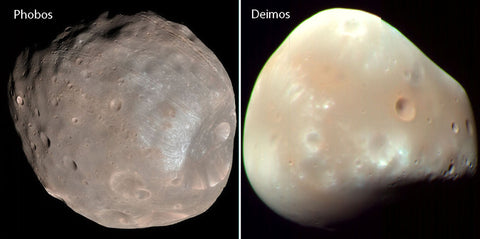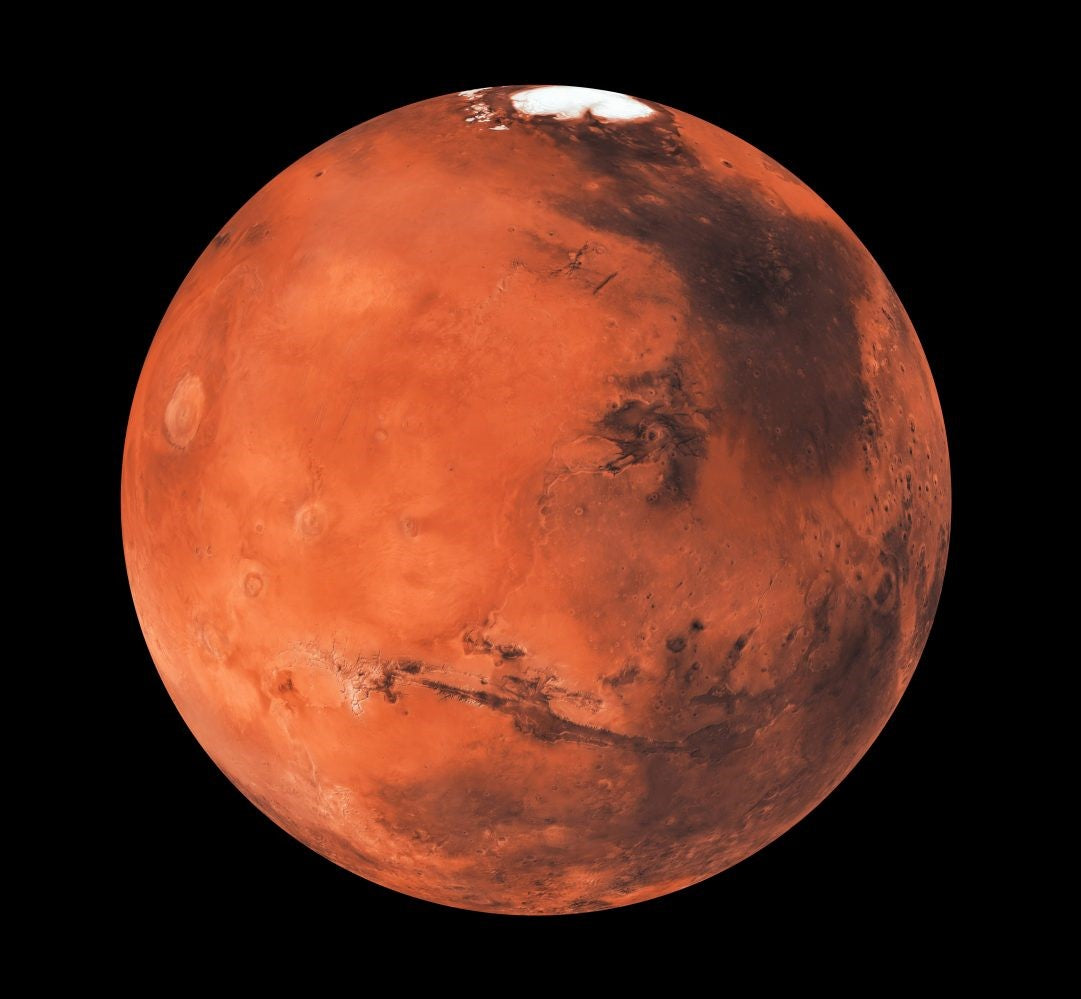Mars is the fourth planet from the Sun – a dusty, cold, desert world with a very thin atmosphere. Mars is also a dynamic planet with seasons, polar ice caps, canyons, extinct volcanoes, and evidence that it was even more active in the past. Mars is one of the most explored bodies in our solar system, and it's the only planet where we've sent rovers to roam the alien landscape. robotic explorers have found lots of evidence that Mars was much wetter and warmer, with a thicker atmosphere, billions of years ago. Let’s unveil what is so odd about Mars that makes it different from our home the Earth.
1. Mars as the Red Planet
Mars is otherwise called the Red Planet. Mars is in soil, rock, and residue produced using iron oxide which gives the surface a red corroded variety. Mars is named after the Roman divine force of war.

Photo Credits : Wiki Mars
2. First landings on Mars:
In 1976, the US Viking tests handled their most memorable effective arrivals on the Red Planet, albeit no space test has up to this point tracked down obvious proof of prior or even at present dynamic life on Mars. Mars is presently circled by three dynamic space tests that are spying out its surface exhaustively. Also, two vehicles (wanderers) continue a superficial level with estimating instruments and cameras that look at the surface and its designs nearby.

Photo Credit: Wikipedia Viking program
3. How many moons does Mars has?
Mars has 2 moons called Deimos and Phobos. They are named after the two ponies that pull the Roman lord of war, Mars', chariot. They might be space rocks caught by Mars' gravity.

Photo Credit: Universe Today
4. How Far is Mars from the Earth?
Mars is the fourth planet from the sun. It is 227,936,637 km (141 million miles) away from the sun. It would require 300 days (about 8 months) to arrive from Earth. Mars is more modest than Earth with a width of 4217 miles. This makes it the second-littlest planet in our nearby planet group. A day on Mars endures 24 hours and 37 minutes.
One year on Mars is 687 days in length. That is 1.9 Earth years. This is on the grounds that Mars is further away from the sun, so it takes more time to circle it.

Photo Credit: ESA Mars Mission
5. What is the Atmosphere of the Mars?
The slant on the hub of Mars is 25 degrees which implies that the planet encounters seasons as we do on Earth as various pieces of the planet are nearer to the sun at various seasons of its circle. Mars has a meager environment of 95.9% carbon dioxide and 2.7% nitrogen. The environment is slender to the point that it's not sufficiently thick to trap the sun's intensity, so it is freezing - going from - 100℃ in winter to 20℃ in summer.

Photo Credits: ESA Mars Mission
6. Is there any Gravity on Earth?
Mars has extremely frail gravity. Gravity on Mars is 37% not exactly on the planet. This really intends that on Mars you could bounce 3x higher. Mars is an earthbound planet since it has a hard and rough surface. Its northern side is brimming with level fields and the southern side has edges and cavities.

Photo Credit: Quora Mars
7. How is the Surface of the Mars?
Mars' surface has many channels, fields, and gullies which might have been brought about by water disintegration (water eroding the surface). This could be proof that untamed water in fluid structure once existed on a superficial level billions of years prior. Mars encounters savage residue storms fueled by the sun which can keep going for quite a long time. The residue tempests can totally cover the planet and ceaselessly change Mars' surface.
Mars is home to Olympus Mons, a lethargic well of lava and the biggest fountain of liquid magma and most noteworthy mountain in our planetary group. It is 16 miles high and 600 km across the base, making it 3x the level of Mount Everest. The greatest cavity on Mars is Borealis Bowl. It is 5300 miles from one finish to another and covers 40% of the planet's surface.
Mars has the biggest gorge in our nearby planet group, Valles Marineris. It is 4 miles down and stretches large number of miles long. Mars has north and south poles like earth. The polar ice covers are canvassed in a layer of frozen carbon dioxide (dry ice).

Photo Credit: NASA Curiosity Rover
8. Is there any life on Mars?
There is no proof of life on Mars. Notwithstanding, it is the planet with the best circumstances to help life and researchers accept there is potential for life underneath because they lately found ice on a deeper level.
Mars Wanderers (which are like robots) were sent on missions to investigate Mars and gather tests and record logical information for researchers on Earth to review. A portion of these Meanderers incorporate Viking 1, Viking 2, Mars 2, Mars 3, Soul, Phoenix, Pathfinder, Interest, and Opportunity.

Photo Credit: NASA Article on Medium
9. How Mars looks like from the Eye of Telescope?
The red planet Mars gave wings to the creative mind even in the beginning of humanity. Its striking rosy variety was suggestive of blood, so the prompt external neighbor of the earth was before long connected with lords of war and wars. Mars is the most Earth-like planet in the planetary group and by and large permits an immediate perspective on its surface in the telescope. Not long after the innovation of the telescope, stargazers had the option to recognize light and dim spots on the outer layer of Mars and they perceived the splendid polar covers, which they accurately followed back to ice. It immediately became evident that Mars pivots at 24 hours and 37 minutes nearly at a similar speed as the Earth, a comparative one that Has hub tendency and is, thusly, liable to articulated seasons.

Photo Credit: NASA Perseverance
If you love Mars and want to be a MARS WARRIOR, then get ours Mars Base Unisex Jersey Short Sleeve T-Shirt from
Checkout our Mars Merch and show your love!
Happy Sci-Fi and Mars Lover <3

